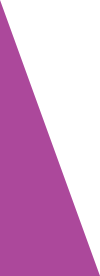November 5, 2024 k-2-math-practices, 6-8-math-practices, 3-5-math-practices
How to Create Mathematical Discourse That Improves Reasoning, Grades 1–8
By: Jeff Todd
“How am I going to get my students reasoning about math in my class?” If you are just getting started in this area or even if you have been at it for a few years, you will find here some great ideas for using classroom discourse to get mathematical reasoning flowing in your class.
Having recently tuned in to Ellen Edmond’s webinar, How Do You Get Your Students Talking Mathematically, available for free on the Sadlier website, I was inspired to share some of her ideas, along with my own, about improving this important facet of our classroom routines.
DELIBERATE MATHEMATICAL CONVERSATIONS IN THE CLASSROOM
I was working with a fifth grade boy last week—let’s call him Andre—who’s a few years behind in math and not a great reader. He was having trouble with predicting the effects of measuring an object with larger and smaller units. He understood that centimeters were smaller than inches, but wasn’t able to generalize the idea that it takes more of a smaller unit to measure an object. The kind of discussion we had reminded me of how we need to explicitly teach reasoning—something Andre had had little exposure to. The excitement in his eyes and the way he carried himself after that conversation when he was able to generalize his observation about centimeters and inches to smaller and larger units was well worth the time it took to draw it out of him.
This is one small example of how important it is for students to be exposed to reasoning skills through classroom discussions from the earliest grades. Students don’t all-of-a-sudden manifest higher order thinking skills. They are carefully built up over time. We always hope this work is supported at home, in students’ families, but especially when it isn’t, we have to make sure that our classrooms become the place where students develop these skills. We need to be very deliberate about our efforts to teach reasoning and higher order thinking skills.
One of my favorite quotes from Ellen Edmonds is about creating mathematical conversations in our classroom talks about this deliberateness.
These conversations are not happenstance. We plan very carefully our lessons and structure them in such a way that students are encouraged to interact with each other and with us as the educator. As we are doing that, we are focusing on places where students have a demonstrated gap in understanding, and we are promoting opportunities for students to talk about math and to be able to use precision as they do so—expressing the ways that they have solved problems, the process they’ve used, and how it makes mathematical sense. And so those opportunities for conversation really provide that prime fodder for success.
Download the Creating Classroom Discourse that Improves Student Reasoning CCSS Benchmark Charts now.
WHAT IS CLASSROOM DISCOURSE?
The 1991 NCTM Professional Standards for Teachers outlines what mathematical discourse in the classroom should aspire to. It refers to ways of representing, thinking, talking, and agreeing and disagreeing that educated people use to discuss mathematics. It is a dramatic rethinking of the roles of the teacher and student in the classroom and of what counts as mathematical knowledge. Teachers set the tone for this in how they orchestrate discussions and how they give students the responsibility for presenting ideas to each other. It ultimately empowers students to become learners, thinkers, reasoners, and mathematicians in their own right. Students who collaborate and discuss with their peers develop deeper understanding.
MATHEMATICAL DISCOURSE IN THE CLASSROOM SHOULD:
-
Build on and respects students’ thinking—not the teacher’s
-
Provide students with opportunities to share ideas, clarify understandings, correct misunderstandings, and develop convincing arguments and proofs
-
Move forward the mathematical thinking of the whole class, not just individual students’ skills, allowing teachers to see where the students are and to intervene as needed.
One of the tools that I found, and which I think will be helpful to math teachers, is the Speaking and Listening Standards from the Common Core State Standards Initiative. The Speaking and Listening Standards related to reasoning fall into two main categories: Comprehension and Collaboration, and Presentation of Knowledge and Ideas.
These standards, available as a download, provide a jumping-off point for you as the teacher to know what is expected for classroom conversations for any grade level from Kindergarten to Grade 8. It sets a course for the incremental development of students’ listening and speaking skills.

REASONS FOR USING MATHEMATICAL DISCOURSE
One thing I was reminded of in the webinar is that classroom discourse is not the same as having whole-class discussions. I think that I myself fall into this trap, limiting my view of other ways that students can be taught to collaborate. Edmonds talked about quickly moving back and forth between whole-class discussions, pair work, and accountable talk. I was able to reflect on some of the success I have had in the past few years by combining these strategies.
Here’s an example of what I have seen to be effective: After launching the class, I might have a five-minute lecture about a misconception I had noticed in students’ homework showing some examples. I would then ask the students to turn and explain to their partner what the misconception was and how they needed to change their thinking. This set of paired conversations needs only two minutes to complete. Students practice their listening and speaking skills by rephrasing or summarizing my five-minute talk to each other. Listening in on some of the conversations, I can get a sense of whether or not my point got through to them. Then I would go back to a whole-class discussion, calling on students (randomly, using popsicle sticks or cards), to see if they had heard and understood what I was trying to communicate.
REASONS FOR USING DISCOURSE AS A METHOD OF TEACHING:
-
It improves reasoning ability. Students learn over time to make claims and present evidence to support a claim or a counterexample to refute it.
-
Students reflect on their own understanding as they critique the reasoning of others.
-
It allows teachers to address misconceptions that draw from the teacher’s personal reflection on exit slips, homework, or previous group discussions.
-
It creates a community of learners, which is the responsibility of the teacher to develop.
-
It empowers students by sending a message that through the hard work of being engaged, they will learn.
-
It develops language skills: vocabulary, academic language, tier-two vocabulary, and the precise use of mathematical vocabulary, resulting in increased comprehension.
-
It provides motivation to learn as every student is expected to participate.
WHAT IS THE ROLE OF TEACHERS IN CLASSROOM DISCOURSE?
Depending where you are in your development as a teacher, you might need to just implement the basic talk moves in your classroom. But if you have already taken this step, don’t skip over this section because you will find below some suggestions for teachers that are really helpful.
Teacher Talk Moves in the Classroom
The five teacher talk moves are a great starting point if you are new to creating classroom discourse. They are ways that you will need to model and teach your students to interact with each other. Here is a brief description of them:
1.) REVOICING—teacher provides feedback to the student such as, “so, you are saying…
2.) REPEATING—a student restates or paraphrases another student’s reasoning, which slows down the discussion on key points and allows every student to reprocess the information
3.) AGREE/DISAGREE—students apply their own reasoning to someone else’s
4.) PROMPT FOR FURTHER PARTICIPATION such as “is there anything that you would like to add?”—not asking for repetition and instead looking for novel ideas creates the environment where everyone’s contribution is valued and provides motivation for students to engage
5.) WAIT TIME—being comfortable with silence and teaching students that thoughtful, rather than quick, comments are valued tends to increase the depth of the discussion and allow all students time to process the information
Classroom Discussions in Math
If you are already implementing these talk moves in the classroom, and even if you are just starting, you want to pay attention to Edmond’s research-based suggestions for the implementation of effective whole-class discussions.
STAGE QUESTIONS AND DISCUSSIONS—Organize the discussion from small pieces to larger wholes. Do not ask the big questions first. Start with lower-level questions and move to higher-level questions. Otherwise, you will “spill the beans” at first, frustrating your attempts to achieve deeper, more engaging discussions.
MOVE QUICKLY—Use the different modalities of teacher talk, whole class discussions, and pairs or groups to vary the pace of the discussion and to keep all students engaged and processing the topic at hand.
MAKE THE BRIDGE—Although this article is not about writing, students will be prepared for writing after having participated in oral reasoning from class. A quick-write in the middle of a discussion or an exit slip forces students to make some kind of conclusion on their own.
PRECISION IN LANGUAGE—Coach students to use the precise language of math. Prepare in advance and give students a short list of terms that you expect to be used well that day.
MONITOR, DON’T INTERVENE—As much as possible, simply observe students’ pair or group discussions. Keep notes and identify ideas and students who have something novel to share with the class later.
CONSIDER PAIRING CAREFULLY—Avoid always pairing high with low students. Equal-level pairing may promote a fairer discussion. Students feel much safer in pairs and when paired in similar level may feel less threatened, resulting in a more productive conversation
SUPPORT CLAIMS WITH EVIDENCE—Ask students for clear examples or counterexamples the support their ideas.
WHAT TO EXPECT FROM STUDENTS AT DIFFERENT LEVELS
Pulling this all together in the classroom might seem overwhelming, especially if you are new to integrating discourse into your classroom routines. But you shouldn’t the only one doing this, as developing great student discourse should be a goal of every teacher in the building. If you are teaching only math or just math/science, then you should tap into your network of ELA counterparts to help you. There are well spelled-out standards for speaking and listening at each grade level that are part of the Common Core Standard, some of which are spelled out in the download for this post.
As you are planning your lessons, you can use this downloadable chart to help you identify Speaking and Listening standards to improve reasoning in your classroom discourse for each grade level.
This chart shows the increasing sophistication that students should have in reasoning and argumentation at each grade level in the two standard clusters, Comprehension and Collaboration as well as Presentation of Knowledge and Ideas. For both clusters, it lists the standard numbers, the actual standards, and how the standard has changed from the grade level before. That allows you to hone in on exactly the facet of communication that you want your students to develop.
If your supervisor or coach is looking for “language standards” as part of your lesson plan, these would fill that need. This download will also be very helpful at your professional development meetings across content areas.
CONCLUSION
I hope you can take the time to view Ellen Edmond’s webinar How Do You Get Your Students Talking Mathematically available for free on the Sadlier website. It served as the inspiration for this article, and I have just scratched the surface of the ideas and practical applications that she presents.
If you missed it, you can also check my previous blog post on Math Discourse, as well as the work of Lucy West, recently highlighted on my blog and the person who initially mentored me on these ideas.







